





Balsam forest
Application instruction:
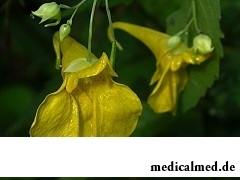 As a medicinal plant, a balsam it is widely known in the Urals and in Siberia under the name "Vanka Wet", in Central Asia and in the Caucasus it is called "touchy person". The plant received all these names because of the features. First, mature fruits of a balsam crack, scattering on the parties seeds, at the slightest touch to them, from here and there was a name "touchy person". Secondly, at the edges of leaves of a plant droplets of liquid of whitish color act for what he was nicknamed "Wet Vanka".
As a medicinal plant, a balsam it is widely known in the Urals and in Siberia under the name "Vanka Wet", in Central Asia and in the Caucasus it is called "touchy person". The plant received all these names because of the features. First, mature fruits of a balsam crack, scattering on the parties seeds, at the slightest touch to them, from here and there was a name "touchy person". Secondly, at the edges of leaves of a plant droplets of liquid of whitish color act for what he was nicknamed "Wet Vanka".
There are several grades and kinds of this plant. In Russia it was grown up as a window plant, and now the balsam enjoys wide popularity at gardeners. In total about 400 decorative species of a plant, however that which grow only in forest zones with a temperate climate – only 8 are known. And the balsam forest, though is poisonous, belongs to the category of medicative herbs and with care is used in the recreational purposes.
Chemical composition
The plant contains a large amount of ascorbic acid (only in a blooming period). In addition stalks and leaves contain alkaloids, acids, glycosides, flavonoids and tannins.
Useful properties
The balsam forest renders diuretic, antiseptic, laxative and antiedematous action.
Indications to use
The balsam forest is applied in the presence of stones in kidneys and a bladder, at dropsy, outside hemorrhoids, rheumatism, and also as disinfectant.
Contraindications
Use of a balsam forest has a number of contraindications. Drugs from this plant are strictly forbidden pregnant women and the feeding women, children up to 14 years and to persons with diseases of the alimentary system.
At overdose the balsam causes poisoning.
House drugs from a balsam forest
Thanks to the curative properties, the balsam forest is fine wound healing and anti-inflammatory drug for external use. For washing of wounds, including purulent, and also ulcers and hemorrhoidal cones, plant broth which is prepared from calculation one tablespoon on a glass of boiled water is used. In it moisten a gauze tampon which then is put to the inflamed surface.
Freshly squeezed juice from balsam leaves perfectly heals wounds and pain calms, but it should be applied carefully.
The balsam forest is highly appreciated in traditional medicine for beneficial influence on kidneys and all urinary system. The plant perfectly proved at treatment of stones in kidneys and a bladder. Substance, contained in it, crush stones in sand and smoothly remove them. In addition the plant contains the connections promoting removal of excess liquid from an organism.
It is necessary to accept infusion and broth of this grass it is strictly dosed, remembering that it is poisonous. To prepare infusion, one teaspoon of leaves and stalks of a balsam undertakes, it is filled in with a glass of boiled water and infuses within 20 minutes in the warm place. Accept plant infusion no more than one tablespoon at one time and no more than two tablespoons a day.
In addition to an urolithiasis the balsam is used for treatment of gout and rheumatism: do bathtubs with addition of the concentrated broth, and also accept inside one tablespoon of infusion of a grass after food.
Caries is the most widespread infectious disease in the world to which even flu cannot compete.
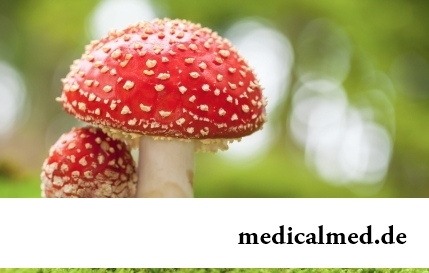
Mushrooms - the surprising inhabitants of our planet having a set of wonderful qualities. Thanks to one of them, a mold mushroom of Penici...
Section: Articles about health
There is a lot of fans of beer in our country. Statistically, on each average Russian (including women and children) in a year about 60 liters of this drink are consumed. It is not a lot of, as in the Czech Republic or Germany, but figure all the same impressive. Radova...
Section: Articles about health
Modern footwear is extremely various. It stopped being only protection for legs long ago. Today shoes, boots, barefoot persons choose not so much proceeding from their convenience and functionality how many being guided by outward, brand and an opportunity to add with them a stylish dress. At the same time, buying footwear, think of its safety a little. Meanwhile, many popular models can do essential harm to health....
Section: Articles about health
Each person has easy indispositions which he transfers "standing", trying not to ask for medical care. Argu...
Section: Articles about health
Musicotherapy – a treatment method which caused and causes a set of a controversy concerning its efficiency. However the facts are relentless: during the numerous researches curative impact of music on an organism was scientifically confirmed. Since then in a number of the countries a method...
Section: Articles about health
What they, women? Beautiful, gentle, passionate and at the same time windy, gusty, and nervous. And what is stranger: have all these qualities of the woman at the same time. But here only the mood their time sharply changes on completely opposite: in the morning they laugh and joke, and in the evening cry or are irritated....
Section: Articles about health
You are office worker, the driver, the fan of winter sports or do not think of life without bicycle? You conduct a slow-moving image жизн...
Section: Articles about health
The person, as well as all other beings living on our planet feels weather changing. It is the normal meteosensitivity which is not causing to healthy people of special troubles. Meteodependence, on the contrary, is morbid condition, характеризующимс...
Section: Articles about health
For the time being the perspective of heart diseases seems to most of people remote and foggy. But sooner or later practically each adult faces extremely unpleasant feelings: sudden stethalgia. To be consoled at this time in a thought of what for a heart attack still early, will hardly turn out: if the person is impressionable, he, as a rule, has feeling of panic and fear of fast death. And meanwhile, it is very often possible to confuse pains with cardiac pains невралгическог...
Section: Articles about health
An eye of the person daily experiences considerable strain. The problem of preservation of sight is for many years directly connected with a question снабж...
Section: Articles about health
All of us, unfortunately, should face flu nearly an every year. It would seem, so frequent disease has to be studied already up and down, and each person, at least once by it had (and the number of such people in our country aims at 100%), a dolzha...
Section: Articles about health
Reactive pancreatitis - the disease which is characterized by inflammatory process in a pancreas which arises most often because of excess activity of digestive enzymes. It − the emergency state which treatment has to take place in surgical department under control of doctors. The acute inflammation of gland can become the reason of its transition to a chronic form, and also development is purulent - necrotic pancreatitis which the extensive necrosis of fabrics can follow. Zabolev...
Section: Articles about health
Eyes – unique body on the structure thanks to which the person obtains about 80% of information on the world around: about a form...
Section: Articles about health
The stroke is one of the most widespread diseases of the person, annually in the world about 6 million cases of this pathology are registered. According to medical statistics, strokes occur almost three times more often than myocardial infarctions. Disease otno...
Section: Articles about health
Phobia – the persuasive fear of a certain contents shown in a specific situation against the will of the person. Concepts of a phobia and fear are similar, however if the fear is natural protective function of mentality, then the phobia is its deviation. So the person can feel the unaccountable, baseless fear accompanied with neurotic symptoms (perspiration, a shiver, a fever) before any ordinary phenomenon – for example, a trip by the subway or a simple dog....
Section: Articles about health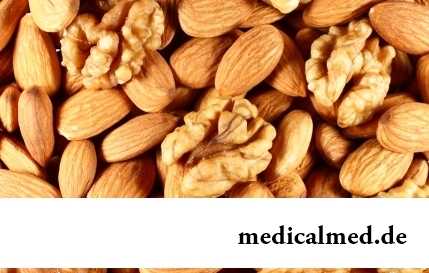
For the last decades the diabetes mellitus of the second type became really world problem. Number of cases annually cart...
Section: Articles about health
The naturopathy sometimes moves as the new direction of medicine, something like fashionable hobby, and there is nothing farther from the truth. This most ancient direction, the word "naturopathy" is translated as "treatment by the nature", and, no doubt, treatment приро...
Section: Articles about health
The depression not without reason is considered one their main troubles of our century: for scientific and technical progress, acceleration of rate of life and a surplus of information of people it is forced to pay with stresses, negative emotions and weakening of protective forces of an organism. As a result widely the states which are characterized by the increased uneasiness, falling of interest in life, spiritual and physical discomfort extend....
Section: Articles about health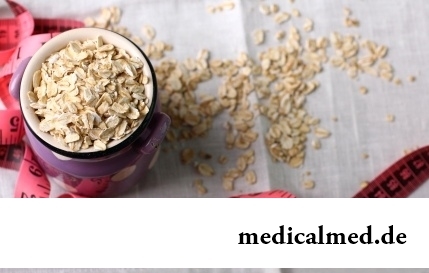
The list of stereotypes of which, apparently, all know strongly includes following: British surely eat for breakfast овсянк...
Section: Articles about health
More than a half of the married couples which faced prostatitis – leave. The new broadcast "Female View of Prostatitis" will help to learn – whether you have or your relatives problems....
Section: Articles about health
Tuberculosis – a serious infectious disease which development is caused by mycobacteria (Koch's bacilli). The illness is known from an extreme antiquity. Long time fight against it was considered as ineffective. Quite often the disease affected the whole families, and mortality from it was very high. It became the reason of emergence of a set of delusions concerning transmissibility and a possibility of treatment of tuberculosis....
Section: Articles about health
Sooner or later hair turn gray at all. Many people try to hide these changes, returning natural color of the hair with the help about...
Section: Articles about health
The advantage of swimming for the person is so high that this sport is not only the most popular, but also is widely applied in medicine and rehabilitation processes. If you look for for yourself the occupation allowing pleasantly and to spend time, then swimming with advantage...
Section: Slideshow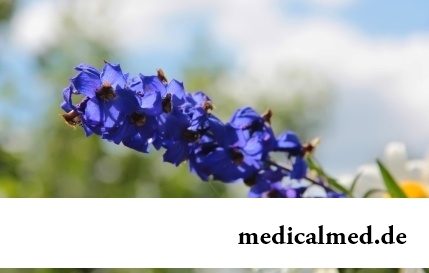
It is impossible to imagine human life in which there would be no plants. Practically in each apartment and any production room there are window plants, millions of people with pleasure are engaged in gardening and truck farming, many citizens spend free time on seasonal dachas. However we very seldom pay attention to those properties of our green pets who can make the neighbourhood with them unpleasant and even unsafe....
Section: Articles about health
Deciding to get rid of an addiction, not all imagine what effects it is necessary to face. Process of refusal from ку...
Section: Articles about health
Bees – really unique beings. Practically all products of their life activity are used by the person. Since the most ancient times medicinal properties of honey and other substances received in the course of beekeeping are known. The fact that all these пр is especially significant...
Section: Articles about health
Childbirth is the most important event in life of each woman. We are women we give birth to the new little man on this light. Now the tendency to that was outlined, as men want to participate in labor too. But there is a question and whether it is worth allowing the husbands on childbirth?...
Section: Articles about health
